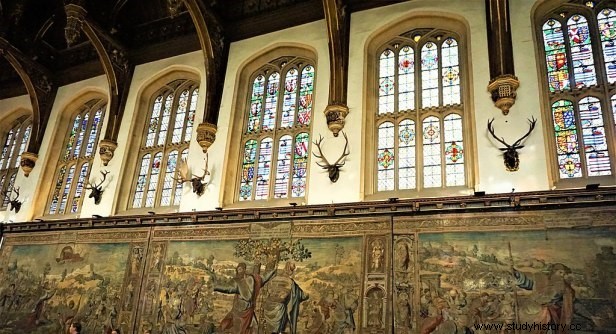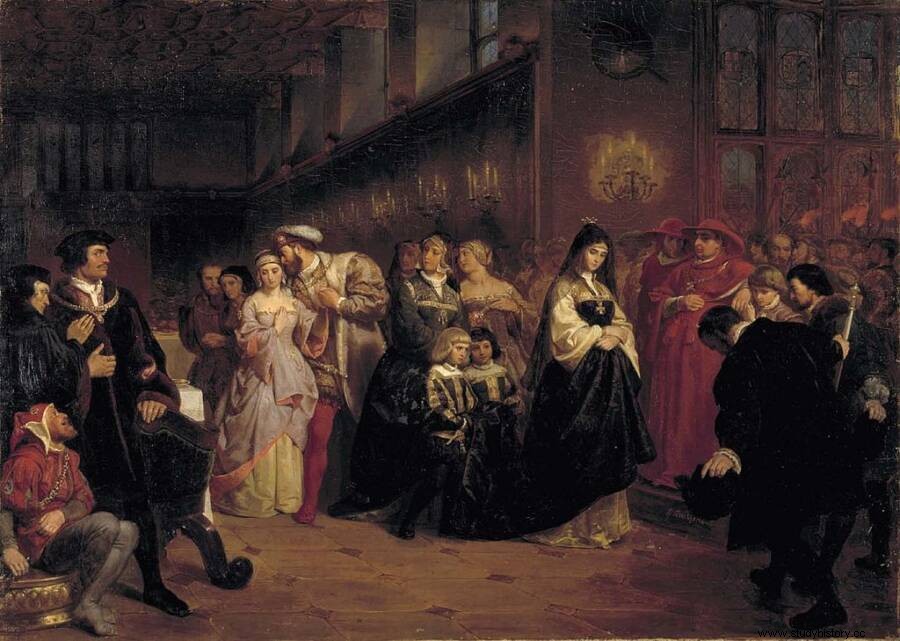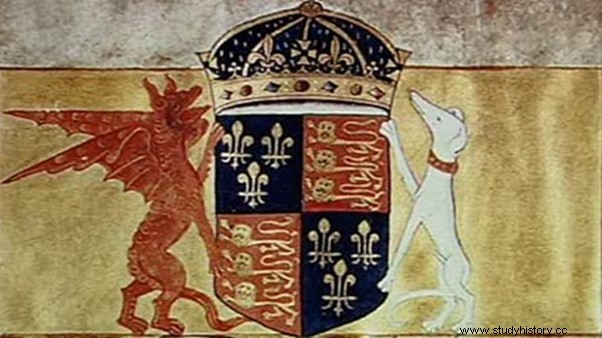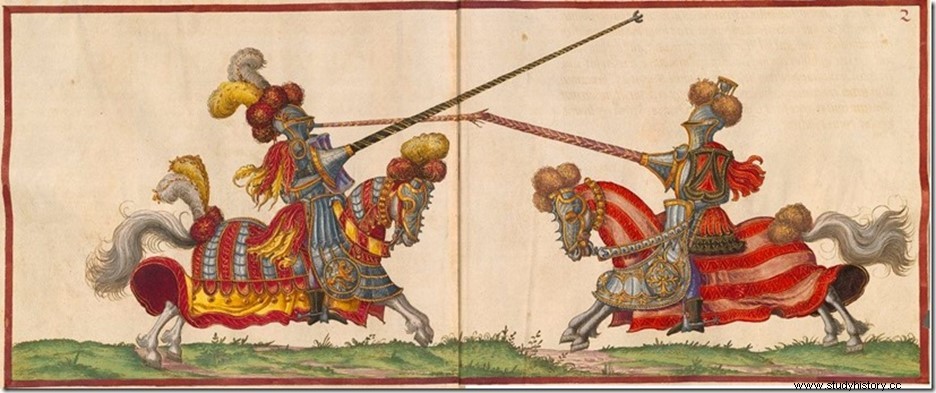In the story, some characters create an impact on their respective societies that evolves due to their efforts. From charisma, security and perseverance a true leader rises and is celebrated.
Here the life of King Henry VIII:A Tudor Dynasty paragon gets the spotlight recognized!
Early life

On a summer day on the twenty-eighth of June, forty-ninth, Henry Tudor is born. It takes place at the Palace of Placentia in Greenwich, Kent, and becomes the third child of Elizabeth York / Henry VII.
Interestingly, only three of all his seven siblings survive adulthood. In the year fourteen and ninety-three, the young prince experienced that he experienced a degree of power that was not yet to come.
To illustrate, two-year-old Henry was named "Constable of Dover Castle" and "Lord Warden of Cinque Ports". Moreover, as the years went by, he continued to experience several official titles awarded to himself.
While this may seem rather strange to an extremely young child, it served the purpose of the father to retain influence. Apart from this, the whole aspects of the young prince's early life remain unclear except for those titles given to him.
In sum, this marked the beginning of a series of events that would create a lasting impression on England's history.
Unexpected ascent to the throne of the Tudor dynasty

Furthermore, the life of young Henry VIII was filled with great care and elegance. For example, he takes part in receiving a top-ranked education from the best teachers in the country.
In addition, he learns from this experience how to communicate fluently in French, Latin and Italian at an intermediate level. Although the prince gets off to a good start in the first years, he is not expected to become king.
One can see this example in November 1501 when he supports his eldest brother Arthur's marriage to Spain's Catherine (Aragon). In addition, Prince Henry implemented his father's coat of arms design at this event to represent the family heritage.
With an official union created between the kingdoms of Spain and England, the countries can find mutual peace politically. Although Arthur was appointed to rule the English throne next time, he unfortunately succumbed to the "Sweat Disease" at the age of fifteen.
In short, the young prince suddenly found himself inheriting the role of a king after this tragic event.
Catherine of Aragon

In addition comes the purpose of Catherine of Aragon with the Tudor dynasty. Catalina (Catherine) from Aragon became known as the youngest child of the Spanish power couple Ferdinand II and Isabella I.
While her first role was to marry Arthur Tudor and secure an order for both kingdoms, this idea plummeted. To illustrate, for some time after Arthur's death, the widow princess of England became the family's desire to succeed.
On April 21, 1509, Henry VII dies, leaving the official throne to his seventeen-year-old son. With this in hand, Henry VIII decides to take Catherine as his wife, and they marry in June of that year.
In time, the princess struggled to find a stable heir to the English royal family when there were early fatalities. In 1516, however, she gave birth to a girl named Mary who survived to adulthood.
Although successful, Catherine and the king's marriage was annulled in 1533. In short, a new chapter of the English throne began.
Further details about the Spanish princess
While Catherine was separated from her ex-husband, she inherited English history. For example, she is celebrated and recognized for being the earliest known European female ambassador to represent her country abroad.
Apart from this, she also survived Henry's erratic and infamous reign by beheading his future wives. In her later days, Catherine lived in Kimbolton Castle until she succumbed to cancer in 1536.
Moreover, her reputation remains positive and admirable in English history as there came a great period of mourning after her death. In essence, she becomes the most respected wife of King Henry VIII and creates a lasting impression in Tudor history.
A king's reign

Then King Henry VIII's thirty-eight-year reign became known for his mainly personal and political behavior which astonished the country. An example might be his disagreement with Pope Clement VII in which this figure refused to annul his first marriage.
With this in hand, the events of the English Reformation began, which served the purpose of separating religious influence and power. Furthermore, the Church of England was separated from this dominant influence on the main continent of Europe.
Another aspect that was praised for the paragon of the Tudor dynasty is that he became known as "The Father of the Royal Navy". With large investments in this element, England's naval size grew, creating the official "Navy Board".
Apart from this, he also changes the face of the English constitution which results in him exercising additional royal power. While these events during the king's reign shape the nation, the last facet of his six unstable marriages comes.
Taken together, the lives of the most infamous members of the Tudor dynasty are highlighted.
Romantic Relationships / Infidelity

Apart from the innocent beginning and further development of the nation of England, comes the infamous romantic relationships / infidelities of King Henry Tudor. Under his rule, the king was recognized as promiscuous as he had many lovers both known and obscure.
For example, his three-year-old mistress Elizabeth Blount gave an illegitimate heir Henry FitzRoy in 1519. In addition to this case, there are also reports that Henry became involved with either Elizabeth or Anne Hastings.
Moreover, as he is confronted with the constant disappointment of having his heirs die prematurely, he finds solace in matters. This, in fact, caused much of the damage to his first marriage when these events coincided.
While these famous figures in the king's reign are recognized as mistresses, it is believed that there are many more. For this reason, his officially recognized future relationship fails in a domino-like cycle.
In summary, Henry VIII's carnal weakness plays a major role in his eventual fall.
Anne Boleyn

In addition, there is the case of Anne Boleyn's role in the Tudor dynasty's house. In the year 1532, King Henry receives approval from the French king to support his new marriage after divorce.
Shortly afterwards, he and Anne Boleyn marry, and she quickly becomes pregnant. Although this seems like a quick relationship, the King and Anne have known each other for a while.
To illustrate, during the dark spots of his first marriage to Catherine of Aragon, Henry confided in Anne. Furthermore, their controversial use of time resulted in his long-standing quest to keep her as his next bride.
Back in the marriage, Anne and the king give birth to a daughter named Elizabeth. While their marriage experienced a brief period of calm, many problems overlapped.
Anne, for example, did not fit into the role of the ideal queen as she became too independent and created more enemies. Apart from this, it created further problems in giving a male heir a divorce.
Overall, Anne's role in this royal house played a major role, in the beginning, which also ignited the English Reformation.
Decapitation of wives by King Henry VIII

After a second marriage was ruined due to inability to obtain a male heir, Henry VIII ends his union. Although this topic remains open and discussed through the ages, cases of witchcraft, infidelity and conspiracy run rampant.
This causes the Tudor king to order the execution of his second wife and those closest to her. For example, in the spring of 1536, five men, including Anne's Brother, were sentenced to death
Furthermore, with another marriage annulled, Anne Boleyn finds herself beheaded in Tower Green during the same period. Four marriages later, things take a dark turn when (fifth wife) Catherine Howard becomes the next queen to be beheaded.
Interestingly, the rest of Henry's marriage either ends in tragedy, or they are simply incompatible. This aspect of the king's reign brings extra notoriety to history due to his violent and erratic ways.
Essentially, this serves as a dark era in the history of the Tudor dynasty.
Law of Wales Act 1535

In addition to the dark aspects of Henry VIII's reign, there is a brighter period. For example, he became responsible for enacting the Law of Wales Act of 1535 which sought to unite kingdoms.
In fact, Wales and England were bound together during the reign of the Tudor dynasty. Moreover, the purpose of this event was to create a single state of jurisdiction.
This means that the king can exercise his power freely in the area without restrictions. With this in hand, many can now find remnants of this royal house's influence in historic buildings.
As shown above, this serves as another great achievement the king made in his time in power.
Tudor King's artistic success

Moreover, in public, the Tudor king found prominent place in art. For example, he gets praise and admiration for creating a large number of musical and literary works.
One of his most famous musical pieces is "Pastime with Good Company". Interestingly, the king is also praised for his ability to play the organ and lute.
Furthermore, he also received underestimated attention for his renowned singing abilities. Apart from this, he was also involved in commenting on many books in addition to publishing one.
Another detail of his intellectual pursuits was to become part of the establishment of buildings such as Cambridge and King College's Chapel. In fact, Henry is recognized for being one of the first kings to have a modern humanities education.
In short, this represents a compelling side and contribution to the charisma the king implemented in history.
Jousting accident and deteriorating health

Near the last years of King Henry's reign, he is in a life-changing event. For example, as an athletic man in active sports, he is eventually injured in a duel in 1536.
At first it seems like a small scratch, and ends up being a lifelong health challenge to overcome. After this incident, the Tudor king does not participate in his former active lifestyle which makes him overweight in time.
In addition, his body was covered with painful boils and gout. This condition led to his needing mechanical assistance to maneuver physically.
Interestingly, with recent studies, he is believed to have suffered from McLeod syndrome, as this affects miscarriages during pregnancy. As his physical health declined, so did his mental side as erratic mood swings followed.
Unfortunately, by the winter of 1547, King Henry VIII succumbed to his aggravated health problems at the age of fifty-five. This in turn marked the end of a fantastic era in England.
Last Thoughts on King Henry VIII

Finally comes a final reflection of the royal role model in England. While the king had three surviving heirs, the throne officially passes to his son Edward VI of Jane Seymour.
For the most part, Henry VIII's reign brought a new light to the English throne. He is celebrated in history for being the most influential, charismatic and famous Tudor kings in the royal house.
As seen above, his government has phased itself through a wheel of emotions and events that have shaped him well. Undoubtedly, he is recognized for his achievements and for being an artistic example to future rulers.
All in all, the Tudor dynasty continues to shine through the ages with prestige and respect.
The Importance of the Tudor Dynasty

In conclusion, from charisma, security and perseverance, a true leader has risen to English history. King Henry VIII serves as a main figure for royalty because he proves that everyone is wrong despite being human.
For the most part, an era of intellectual pursuits, art, literature and sports continues to develop because of him. With that said, England has come a long way from establishing its first reign with William the Conqueror.
While William catalyzes a modern nation to be recognized, Henry VIII plays a key role in developing culture. For this reason, the Tudor dynasty receives praise and celebration.
Works cited:
MacLeod, Kevin. Indicate. 2016
Bull, John Melancholy Pavan. 1995
Bull, John Chromatic Pavan. 1995
Jonathan Rhys Meyers | Tudors Wiki | Fandom
McLeod neuroacanthocytosis syndrome:MedlinePlus Genetics
Catherine of Aragon - Children and Queen - Biography
Anne Boleyn - Children, Death &Tudors - Biography
Family tree of the British royal family - Wikipedia
